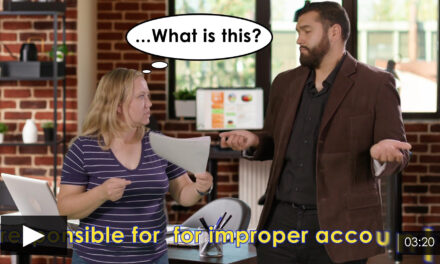California continues to push energy-efficient technology into the hands of homeowners, but at what cost? For some, it has meant facing the loss of their home.
First launched in 2008, the Property Assessed Clean Energy (PACE) program aims to address the need for sustainable energy retrofits. PACE finances energy-efficient upgrades and installations for residential and commercial property owners. These energy upgrades include solar panels, heating and cooling systems, water pumps, LED lighting, insulation and more.
Ten years in, 220,000 homes have been upgraded thanks to PACE. Is this program the key to making sustainable energy available to all California homeowners?
If the answer is ever going to be “yes,” PACE has a lot of problems to work through first.
PACE: too good to be true?
In theory, PACE is a win-win situation for homeowners and local governments that establish the program. Property owners get free or low-cost energy upgrades and save on energy bills and the city is repaid through a tax assessment on the improved property.
But in practice, PACE has been plagued by issues.
For instance, many participants found their energy savings did not completely offset their PACE lien payment on their annual tax bill.
Because the program qualifies homeowners based mostly on home equity and not their ability to repay, some participants were surprised to receive an unaffordable tax bill well beyond their means. This was also true for many participating mortgaged homeowners paying their property taxes through escrow, whose monthly fees jumped to cover the PACE tax assessment.
These unexpectedly high fees inevitably led to defaults, which spiked in 40 California counties from 245 in 2016 to 1,110 in 2017, according to the Wall Street Journal’s analysis of PACE accounts. These homeowners face tax lien foreclosures, which do not eliminate the PACE lien.
The U.S. Department of Energy (DOE) updated its PACE guidelines to recommend homeowner education and disclosures on PACE programs, but those are of no benefit to current participants now facing foreclosure.
Lenders’ main issue with the program is the first-lien status PACE loans enjoy. In fact, the Federal Housing Administration (FHA), the Department of Veteran Affairs (VA), Fannie Mae and Freddie Mac no longer insure mortgages associated with PACE-participating homes since the lien takes repayment priority in a foreclosure.
This so-called “super lien” has become a headache for real estate agents as well, since it stays with the property and makes it difficult for PACE-participating homeowners to sell.
All of these issues stem from a lack of disclosure about the ramifications of PACE financing. Without protections in place, overaggressive contractors often sign up homeowners by misrepresenting the program’s financing structure, according to recent lawsuits against Los Angeles County.
Can PACE be fixed?
In an effort to reform PACE, Governor Jerry Brown signed legislation in 2017 mirroring consumer protections granted by the federal Truth in Lending Act (TILA). The bills also modify PACE’s qualifying scheme to consider a homeowner’s income and introduce regulations for contractor behavior.
After these changes, three major PACE providers, Ygrene, Renovate America and Renew Financial, saw sharp drops of 40%-50% in applications. Considering one bill adjusted the qualifying process to weigh an applicant’s income, this adjustment likely reflects a more accurate number of applicants able to qualify for retrofitting through PACE’s financing structure.
Despite positive legislative steps, homeowners are quickly losing confidence and interest in PACE. Some cities have voted to end their PACE programs rather than see out amendments in the wake of mounting complaints and foreclosures.
If it is to thrive in the long term, PACE will have to mend its public image by focusing on consumer protection. As recommended by the National Consumer Law Center (NCLC) the most important changes needed to protect consumers from PACE-related foreclosures include:
- requiring an ability-to-repay assessment;
- mandating compliance with TILA and the Real Estate Settlement Procedures Act (RESPA);
- requiring an independent energy audit; and
- banning deceptive sales tactics.
But of more immediate concern, PACE — and solar providers — will need to clear economic hurdles like the President’s tariffs on solar panels, steel and aluminum if they are to survive. The tariffs levy a 30% tax on imported solar panels and solar energy cells, a 25% tax on imported steel and a 10% tax on imported aluminum.
Although levied with the pretense of growing the domestic solar industry, these tariffs will actually hurt California solar manufacturers, installers and by extension, the PACE program. This is mainly because the US solar industry relies on imported parts for 80% of its supply.
Immediate effects for PACE, solar energy, and housing
Initially, the cost of major installations will rise by 10% because of the solar panel tariff, according to solar developers. The steel and aluminum tariffs will result in at least a 1-3 cent per watt price increase, according to Roth Capital.
It is unclear how much of this price increase consumers can expect to pay, or in the case of PACE programs, how much greater a participating homeowner’s tax assessment will be. Some solar panel manufacturers and installers are better situated to absorb the price hike than others.
These tariffs threaten to hobble not only the PACE program, but California’s housing recovery.
first tuesday has previously cited high upfront investments as a barrier to new construction starts. Because the tariffs levy a 30% tax on imported solar panels and solar energy cells, the upfront cost of new construction will balloon.
This is partly because the California Energy Commission’s (CEC) new energy standards require residential homes and multi-family buildings of three-stories or less built beginning in 2020 to install solar panels. These standards will make new housing costs skyrocket.
Atop complaints, foreclosures and lawsuits, these new tariffs may be the final nail in the coffin for PACE. It is simply not improving quickly enough to outperform traditional financing options.
In the meantime, forward-thinking real estate agents will advise their clients to pass on PACE and fund energy upgrades through more traditional means. They will also point homeowners to Fannie Mae’s HomeStyle Energy program to help pay off existing PACE loans.
Although designed with noble intentions, PACE has proven itself too disastrous to continue.



















